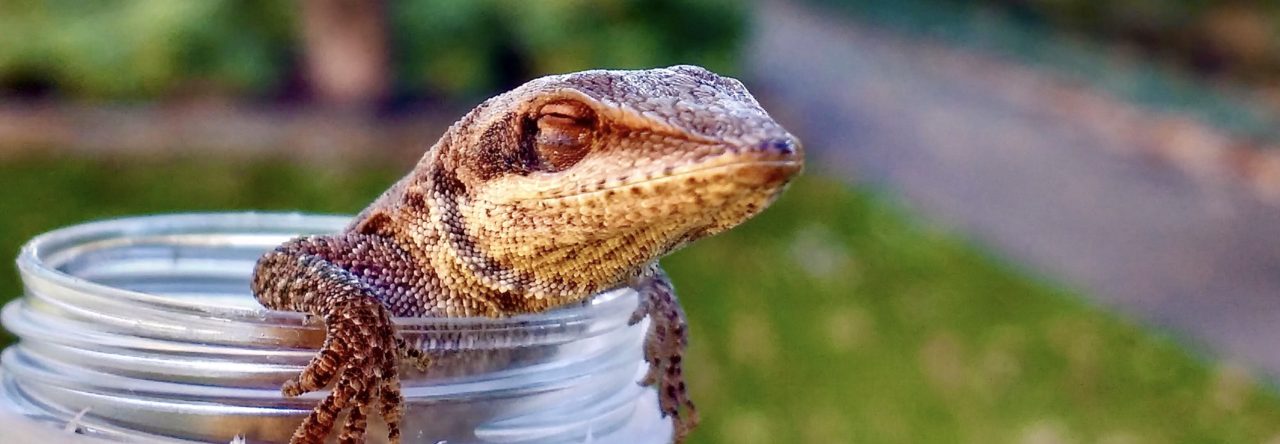
Male Anolis proboscis. Photo by Jonathan Losos
Of all the anoles great and small, near and far, green and brown, one stands out for its combination of elegance, charm, and mystique. I refer, of course, to the Ecuadorian horned anole, Anolis proboscis, denizen of Andean forests, possessor of an enchanted sword, and all-around lizard of mystery. Now, however, the veil has been lifted, as the first reports on the biology of the previously unknown lizard have just been published in Breviora, a journal of the Museum of Comparative Zoology at Harvard.

Rediscovered by birdwatchers. How embarrassing. Photo by Wanda Parrott.
The mystery comes in three acts. The first concerned the continued existence of the horned anole. The species was discovered in 1953 and over the next 13 years, another five were found, all male like the first, all from the vicinity of the Ecuadorian town of Mindo. Then, for four decades…nothing. Many feared the species extinct, perhaps a victim of the deforestation that has ravaged so much of the Western side of the Andes. All this changed in 2005 when a group of birdwatchers spied one crossing a road near Mindo (mind you, this is an arboreal lizard—insert your own joke). Anolis proboscis lives!
The photo above made its way onto the internet and to the attention of Steve Poe, an expert on locating hard-to-find anoles, who led a team of American and Ecuadorian scientists back to Mindo in the summer of 2009. Poe’s approach to finding day-active anoles is seemingly perverse: he stays up all night looking for them. The reason is simple: many anole species sleep on narrow twigs or leaves, presumably because approaching predators will produce vibrations on the flimsy perches, alerting the lizards to impending danger. Although this strategy may be effective in avoiding predators that creep, crawl or slither along branches, it’s not so well-suited to avoid detection by flashlight-toting herpetologists, who are attuned to locating the tiny reptiles—which conveniently blanch to a pale color at night—even when they’re roosting 20-30 feet high in the canopy. Poe’s team quickly located a large number of lizards, establishing that the species not only exists, but seems to have a healthy population.
Unbeknownst to Poe, another team of researchers independently had discovered a new horned anole locality. This team, from the Ecuadorian Museum of Science in Quito, located five specimens of the horned anole at two sites 11-13 km northeast of the original collecting locality, slightly extending the known range of the species. Both groups published detailed descriptions of the anatomy of the species—the Ecuadorian group last year and Poe’s team as the first of the Breviora set published today—describing previously unknown variation in horn size and shape, as well as differences in color and patterning both among males and between the sexes.
And, speaking of differences between the sexes, that leads to the resolution of mystery number two. Ever since the species was first described and the initial half dozen specimens collected, lizard enthusiasts have wondered—what about the females? Do they have horns, too? Of course, in the absence of any information on the natural history of the species, it was hard to have an informed opinion. Is the horn used in self defense, in which case the lady lizards could probably use one as well as the guys? Or is it used by males to fight amongst themselves, or even as an ornament used to woo or titillate? Nobody knew, and so it was anybody’s guess whether the females were nasally adorned or not. But now we know the answer. Before I reveal it, take a moment and take a guess: yes or no? When you’re ready, scroll past the lovely photo of another male and see for yourself.

Male Anolis proboscis. Photo by Luke Mahler
Read More
















